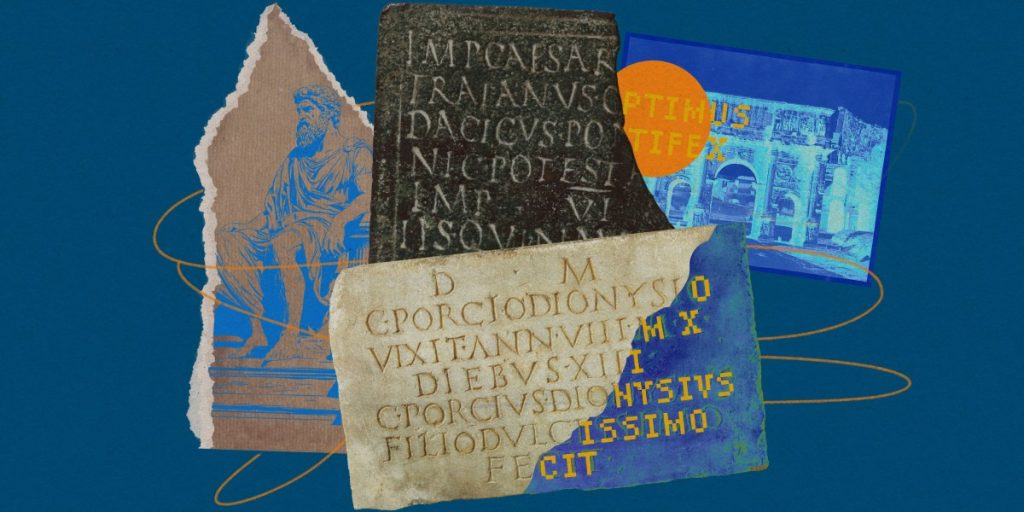To do this, Aeneas takes in partial transcriptions of an inscription alongside a scanned image of it. Using these, it gives possible dates and places of origins for the engraving, along with potential fill-ins for any missing text. For example, a slab damaged at the start and continuing with … us populusque Romanus would likely prompt Aeneas to guess that Senat comes before us to create the phrase Senatus populusque Romanus, “The Senate and the people of Rome.”
This is similar to how Ithaca works. But Aeneas also cross-references the text with a stored database of almost 150,000 inscriptions, which originated everywhere from modern-day Britain to modern-day Iraq, to give possible parallels—other catalogued Latin engravings that feature similar words, phrases, and analogies.
This database, alongside a few thousand images of inscriptions, makes up the training set for Aeneas’s deep neural network. While it may seem like a good number of samples, it pales in comparison to the billions of documents used to train general-purpose large language models like Google’s Gemini. There simply aren’t enough high-quality scans of inscriptions to train a language model to learn this kind of task. That’s why specialized solutions like Aeneas are needed.
The Aeneas team believes it could help researchers “connect the past,” said Yannis Assael, a researcher at Google DeepMind who worked on the project. Rather than seeking to automate epigraphy—the research field dealing with deciphering and understanding inscriptions—he and his colleagues are interested in “crafting a tool that will integrate with the workflow of a historian,” Assael said in a press briefing.
Their goal is to give researchers trying to analyze a specific inscription many hypotheses to work from, saving them the effort of sifting through records by hand. To validate the system, the team presented 23 historians with inscriptions that had been previously dated and tested their workflows both with and without Aeneas. The findings, which were published today in Nature, showed that Aeneas helped spur research ideas among the historians for 90% of inscriptions and that it led to more accurate determinations of where and when the inscriptions originated.
In addition to this study, the researchers tested Aeneas on the Monumentum Ancyranum, a famous inscription carved into the walls of a temple in Ankara, Turkey. Here, Aeneas managed to give estimates and parallels that reflected existing historical analysis of the work, and in its attention to detail, the paper claims, it closely matched how a trained historian would approach the problem. “That was jaw-dropping,” Thea Sommerschield, an epigrapher at the University of Nottingham who also worked on Aeneas, said in the press briefing.
However, much remains to be seen about Aeneas’s capabilities in the real world. It doesn’t guess the meaning of texts, so it can’t interpret newly found engravings on its own, and it’s not clear yet how useful it will be to historians’ workflows in the long term, according to Kathleen Coleman, a professor of classics at Harvard. The Monumentum Ancyranum is considered to be one of the best-known and most well-studied inscriptions in epigraphy, raising the question of how Aeneas will fare on more obscure samples.

